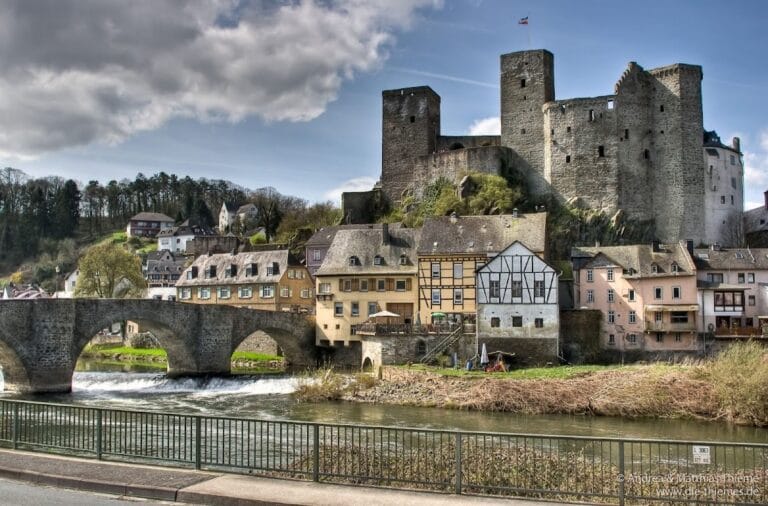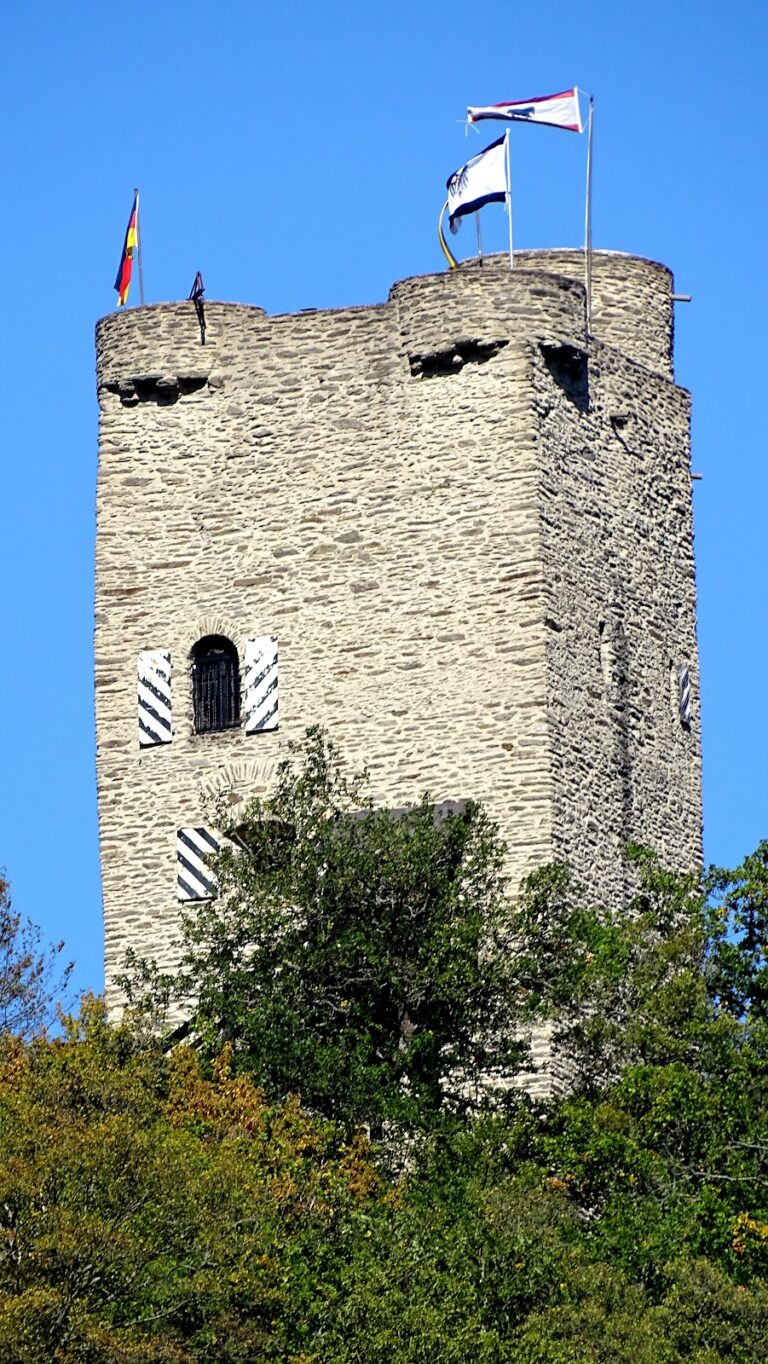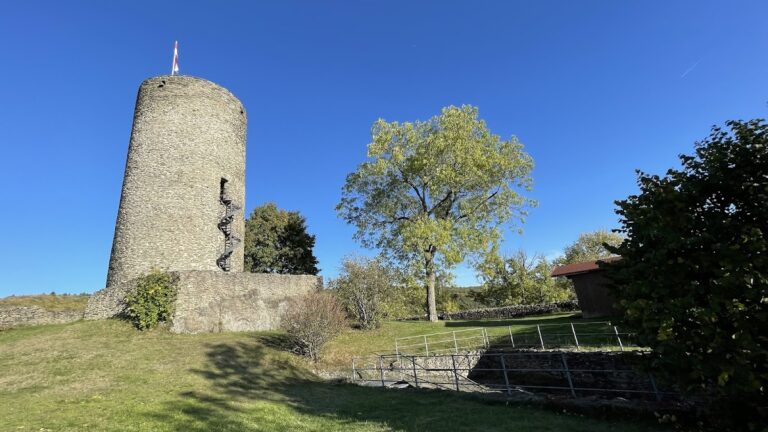Burg Kirberg: A Medieval Castle in Hünfelden, Germany
Visitor Information
Google Rating: 4.4
Popularity: Very Low
Google Maps: View on Google Maps
Country: Germany
Civilization: Unclassified
Remains: Military
History
Burg Kirberg is situated in the municipality of Hünfelden, Germany, and was established during the medieval period by local noble families. The site originally hosted a church dating back to around 790 before the construction of the castle.
The castle itself was built around 1355 through the collaboration of Counts Gerhard VII of Diez and Johann I of Nassau-Weilburg. This joint effort followed a dispute in 1353 between the two houses over control of the nearby village of Kirberg. As part of the negotiated resolution, the two counts agreed to erect a defensive stronghold on a sandstone outcrop, replacing the earlier religious building. At the same time as the castle’s construction, a church and a protective ring wall were also established, coinciding with Kirberg receiving official town rights.
Despite its imposing position, Burg Kirberg seems to have had only limited military or residential use. By the year 1500, records indicate the castle was already deteriorating. It continued to serve primarily as accommodation for visiting lords until the late 16th century. Even after this period, at least one guard was maintained on site until 1670, suggesting some ongoing administrative function.
In 1673, the sandstone rock on which the castle stood was transformed with the addition of a pleasure garden, marking a shift away from military purposes. However, by around 1700, much of the structure had either fallen into ruin or had been dismantled to provide building material for local construction projects. Formal permission to demolish the remaining walls was granted in 1790. Throughout the 18th and 19th centuries, stones from Burg Kirberg were repeatedly quarried to support road building and other constructions in the area.
The castle grounds also included residences for castle officials known as Burgmannen. By the early eighteenth century, these houses no longer stood above ground, remaining only as foundation remnants. Today, while the castle no longer functions as a fortress or residence, its grounds are used occasionally for community festivals, preserving its place in local cultural life.
Remains
Burg Kirberg was constructed upon a solitary sandstone rock formation, known locally as Schalsteinfelsen. This strategic elevation provided a natural foundation for the castle, which replaced an earlier ecclesiastical structure on the site. The building was part of a complex that featured a church and defensive ring wall constructed simultaneously during the mid-14th century.
Today, the ruins of the castle consist primarily of one surviving tower and several remaining walls that mark the perimeter of the former structure. These remnants reveal the medieval use of sandstone as the main building material, which was later extensively quarried once the castle fell into disuse. The retrieved stones contributed to local road construction and other buildings, reflecting the castle’s role as a convenient quarry in its post-medieval decline.
Within the castle precincts were two houses that belonged to the Burgmannen, officials responsible for certain administrative or protective duties linked to the castle. Although these dwellings no longer stand above ground, their foundations remain visible, offering insight into the site’s organizational layout during its active years.
While the castle’s defensive walls and buildings gradually vanished over time, the preserved ruins still convey the footprint of this medieval stronghold. Occasional use of the site for festivals today maintains a connection to its historical presence in the community.










